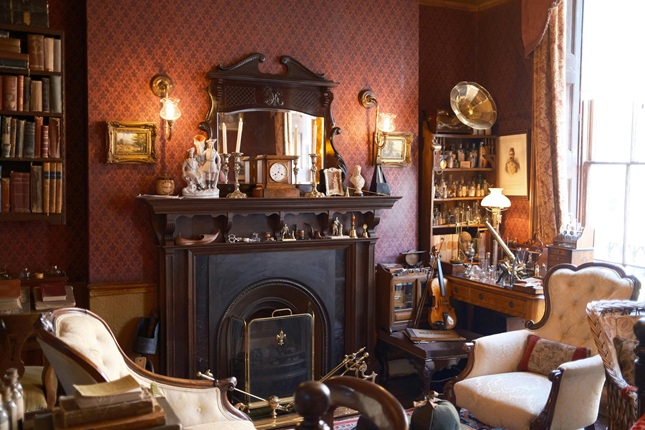The combination of antique and new furniture produces an elegant layered appearance which showcases your individual style through balanced home decor. The decorating style works well in every room type including formal living rooms and intimate bedrooms and open-plan dining rooms. Anyone who becomes adept at mingling clashing time periods does so through deliberate selectiveness of items that coexist quietly rather than competing for center stage.
Start with Key Anchor Pieces
Shop furniture at Antique Farmhouse to find unique antique or vintage-inspired items that can serve as focal points. Start with two or three great pieces and then add more current furniture that will cut against but not overwhelm the space.
Examples of anchor pieces are:
- A hand carved dining table complemented with chic up-to-date chair/s.
- An antique dresser used as a statement console in a minimalist hallway.
- A vintage armchair reupholstered in a modern fabric.
Intrinsic historical worth and skillful production of these pieces will necessarily be focal points as they’ve been selected for display. Put these pieces where they’re visably seen and appreciated and where nothing will come between them and the observer. The room will achieve intentional instead of random look through balancing the visual power of these pieces with contemporaries.
Maintain a Cohesive Color Palette
Unifying color schemes tie together styles. Choosing a background color and using it over and over in antique and new pieces also assists. Neutrals are always safe, allowing room space control through shapes and texture and not competing. Accent colors can be brought in for interest without violating harmony. Repeating accented colors in pillow throws, rugs, or paintings assists in connecting the room. When your antiques display natural wood tones you should pair them with new pieces that have subdued or complementary color schemes.
Balance Proportions and Scale
A big antique armoire combined with light-modern chairs produces an unbalanced visual effect. Instead:
- The room will appear proportionate when you match furniture sizes.
- Each piece should have enough space to be fully appreciated without overcrowding the room.
- Lighting elements and rugs assist in providing visual links between products of varying times.
Visual weight must also be given as much thought as actual size in opting between alternatives. A tiny ornamental item with bright colors or interesting patterns will easily outweigh a big blank object. Symmetry may come from placing identical antique side tables at either end of a contemporary sofa to obtain an even-appearing effect visually.
Incorporate Transitional Elements
Link between older and new styles may be established through new artwork as well as new lighting and from pillows or rugs with coordinating textures. The use of combining accessories in coordinating colors helps in achieving cohesion and blend of antique brass fixtures with brushed nickel trim helps in achieving underlying unifying effect. Visual link between older and new items may be established through subtle details that continually repeat the same patterns which help in achieving fine transition between older and new styles.
Use Materials and Textures to Unify Styles
The process of merging contrasting periods becomes easier through the employment of matching textures or finishes on diverse pieces. For instance:
- A glass-topped modern coffee table can be paired with antique brass candleholders.
- The antique dresser’s wood finish must coordinate with the new shelving.
- Both classic and contemporary seating should use linen or leather upholstery.
The texture of a space establishes the mood as soft cloths and rough hardwoods offer warmth in current spaces but sharp finishes modernize vintage-priority spaces. A tactile conflict is established with a glossy marble top over an extremely ornamented vintage base. These elements develop relationships between other styles as they create dimension within your home’s beauty.
Conclusion
Thoughtful piece selection replaces strict rules when combining antique and modern pieces. A timelessly modern home emerges from selecting strong anchor pieces with matching color schemes and balanced proportions and incorporating transitional pieces and using materials as style connectors. The mixing methodology enables you to merge traditional building elements with modern design elements that deliver functionality and minimalist aesthetic. You can readjust your furniture arrangement to fit your evolving tastes while creating your ideal personal space. Different pieces arranged in various ways create a space that combines visual appeal with comfort while expressing your personal style.




